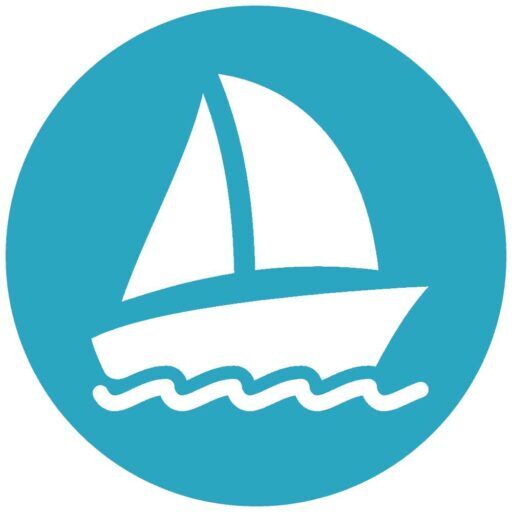
WaterCraft 101
Your guide to fun on the water!
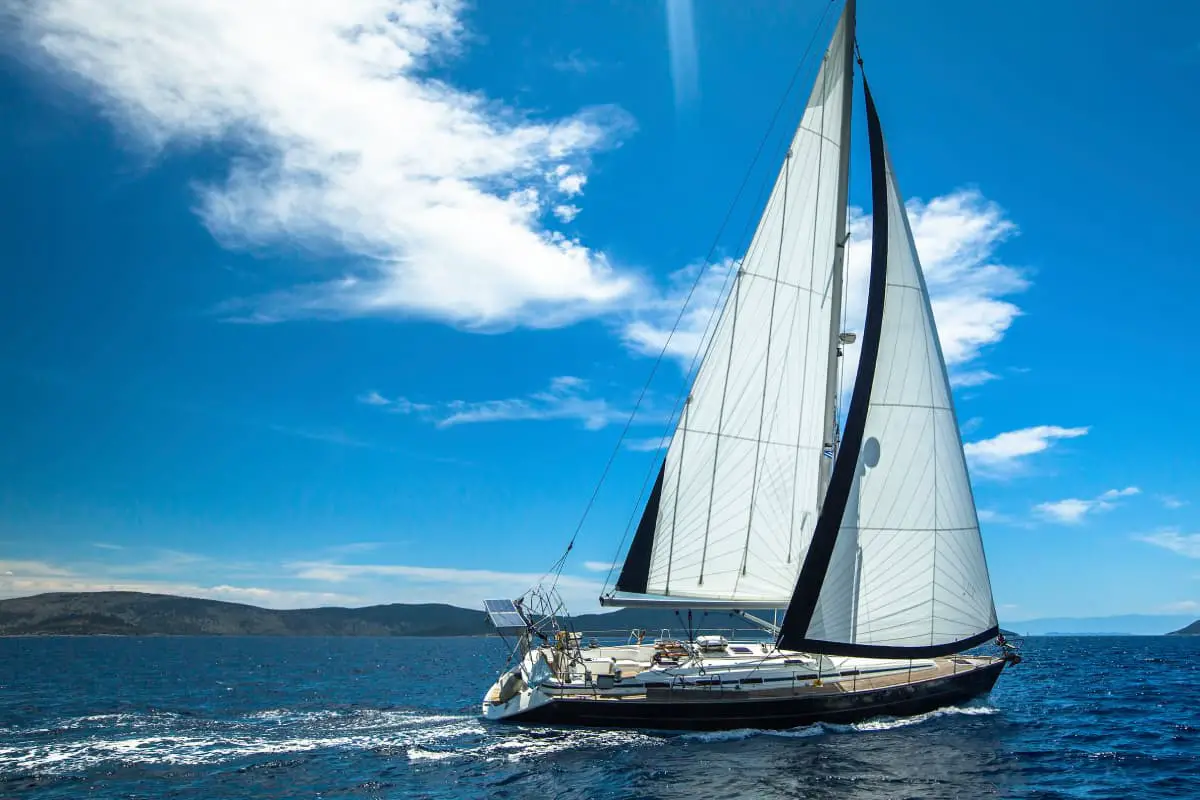

Why Do Sailboats Have Two Sails? (Explained)
If you’ve ever been sailing or watched a regatta, you’ll know that boats typically have two or more sails. It’s uncommon to see them with less than that. But what’s the reason behind this?
Sailboats have two sails to improve the boat’s maneuverability, balance, speed, and ease of handling. The front sail is called the jib, while the one behind it is the mainsail. Some boats have more than two sails to increase their stability and speed even further.
The way sailboats work is very interesting, so you’ll want to learn more! In this article, I’ll give you some in-depth explanations for why sailboats have two sails. So keep reading, everything you need to know is below.
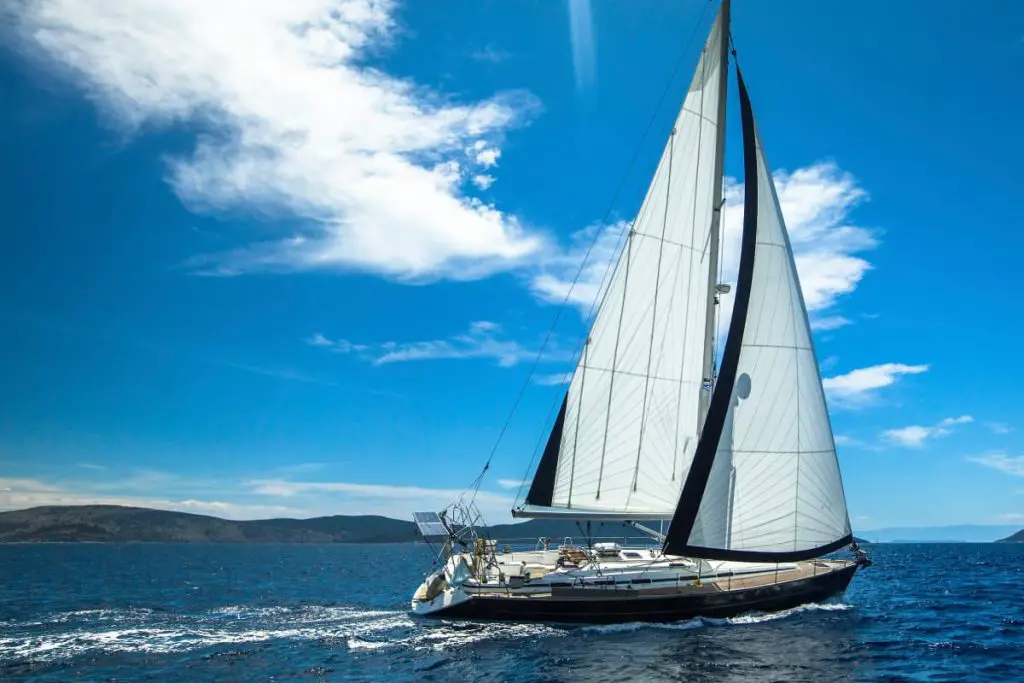
How Does Having Two Sails Help Sailboats?
It’s rare to see a sailboat with only one sail, and this might make you wonder what the science is behind this phenomenon. So, how does having two sails help sailboats?
Having two sails (a mainsail and a jib) helps sailboats by allowing the sailor to better maneuver the sailboat through the water, easily increase the boat’s speed, and have better handling over the boat overall. In short, having two sails offers improved control over the boat.
With all these benefits, sailors can handle their boats with ease. I’ll discuss these points in more detail below:
Two Sails Offer Greater Maneuverability
Many beginner sailers make the mistake of assuming that sailboats move because the wind exerts a force on the sails.
This is only partly true because when a boat has more than one sail, the wind’s current is split along the mast into two rough wind streams on either side of the sail. The space in front of the sail will have a low-pressure area, while the wind will create high pressure behind it. The pressure difference exerts a force on the sails that propels them forward.
The sail will move in the wind stream direction with the lowest pressure by being dragged forward.
The lowest-pressure wind stream gradually stabilizes, resulting in the wind moving faster on that side of the sail. This causes the sailboat to move because the wind is pulling the sail, and it is the same concept as an airplane’s wings creating lift .
Having Two Sails Allows for Increased Speed
A sailboat speeds up when a sail is perpendicular to the wind, with the wind blowing into the sail.
However, having two or more sails can help your sailboat go even faster. Some wind gets caught on your mainsail and some blows around it when you’re out on the water. The air that moves around the mainsail contributes to your sailboat’s acceleration, which you could further increase by adding another sail.
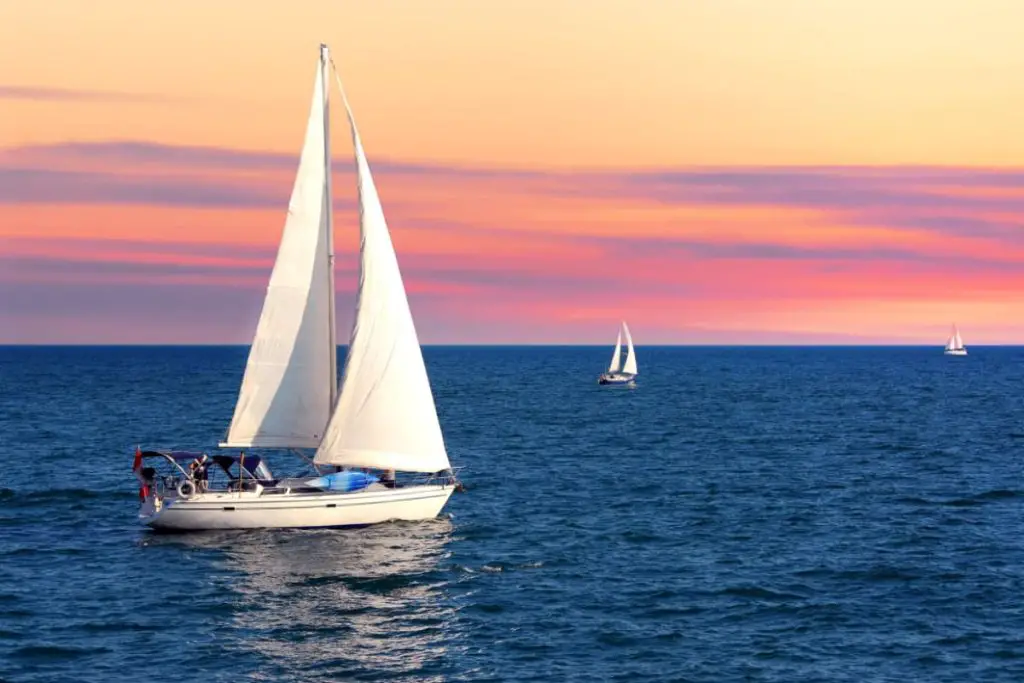
Two Sails Increases the Ease of Handling
When boats have two sails, you can handle them much easier. This is because all boats have a pivot point located behind the mast. Most of the mainsail’s surface area is behind the pivot point.
If you were to sail your boat with only the mainsail, the wind’s force behind the pivot point would be greater than the force in front of it. The sailboat would then tend to turn in the wind’s direction.
In a strong wind, sailing with only the mainsail would mean that your rudder wouldn’t be powerful enough to steer the sailboat, and you would need to rely on the mainsail to steer your boat.
However, adding a jib to your sailboat would balance out the force from the mainsail, making it easier for the sailor to handle and making the boat more stable.
A sailboat’s keel helps keep it upright by compensating for the wind’s sideways forces. However, you adjust the jib slightly to move the sailboat in another direction, proving that having two sails helps you control your sailboat more effectively.
What Are Boats With Two Sails Called?
Boats with two sails are called cutters or sloops. Both have a mast with two sails, but a cutter has two foresails, while a sloop has a mainsail and a jib. Ketches are also sailboats but feature more than one mast with multiple smaller sails.
There are a variety of sailboats out there. Below is some more information about these three sailboat varieties:
Cutter: Sail Configuration
Like sloops, cutters have a single mast. Unlike sloops, cutters usually have two headsails. Cutter headsails tend to have a lower center of gravity than the jib sail of sloops, giving cutters more stability and better control in rough conditions. Cutters are commonly seen in Bermuda-rigged or gaff-rigged configurations.
Regardless of the configuration, cutter rigging is more complex than the rigging of most sloops. This makes them a bit more challenging to handle single-handed.
Sloop: Sail Configuration
When most people think about sailboats, this is the one they see in their minds. The classic single mast, double sail configuration with a Bermuda rig is fun to sail and reasonably easy to control. The high-profile mast does, however, make them easier to capsize in rough conditions.
While the Bermuda rig is the most popular configuration for sloops, it is not the only one. Some sloops feature fractional sloop rigs or specially designed racing rigs. Fractional sloop rigs offer more stability options and usually are preferred for extended offshore use. As you may have guessed, Racing rigs are designed for speed and maneuverability.
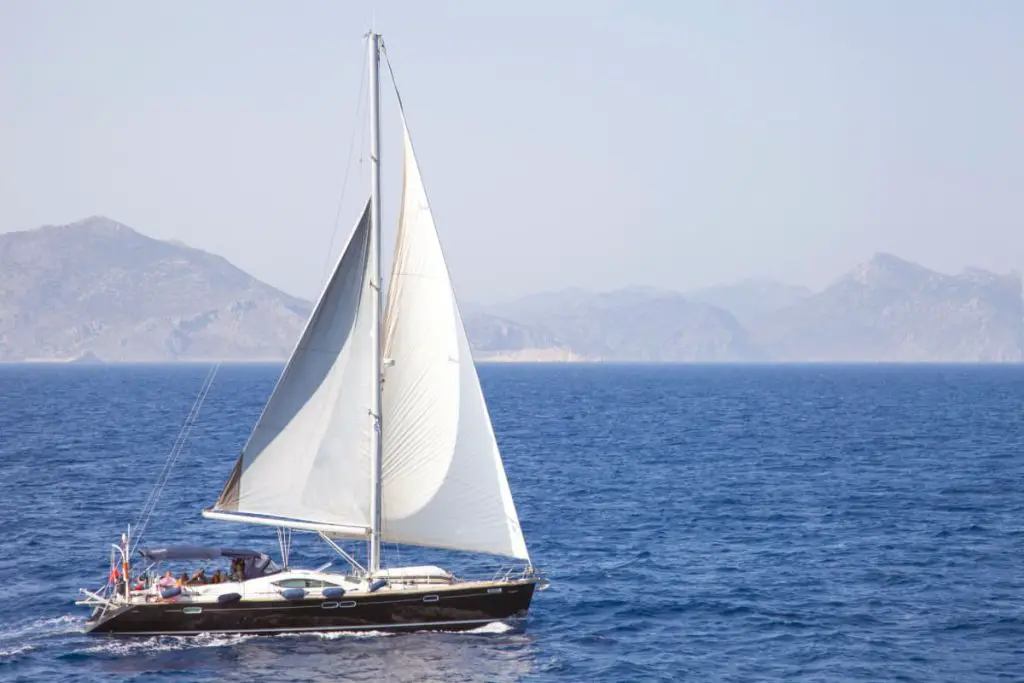
Ketch: Sail Configuration
We’ll now take a short visit to touch on a type of sailboat with more than one mast. Ketches feature a taller mainmast near the front of the boat and a shorter mast near the rear. The shorter mast is called the mizzenmast.
This split rig divides the sail plan into smaller components than a single mast sailboat. A ketch can be either Bermuda-rigged or gaff-rigged. Ketches usually have smaller sails and shorter masts than sloops or cutters, making them easier to control in difficult weather conditions.
Though generally slower than their single mast cousins, sailors who prefer safety over speed tend to favor ketches for their durability and the peace of mind that comes from having a second mast.
Yawls are closely related to ketches, yet the mizzenmasts are set further back.
Why Do Sailboats Have Two Sails – Final Thoughts
Sailboats have two sails as they allow the sailor to:
- Enable better maneuverability
- Increase their traveling speed
- Improve the sailboat’s ease of handling
Sailboats with two sails and one mast can be either sloops or cutters.
Bryan is a Las Vegas resident who loves spending his free time out on the water. Boating on Lake Mohave or Lake Havasu is his favorite way to unwind and escape the hustle and bustle of the city. More about Bryan.
Similar Posts
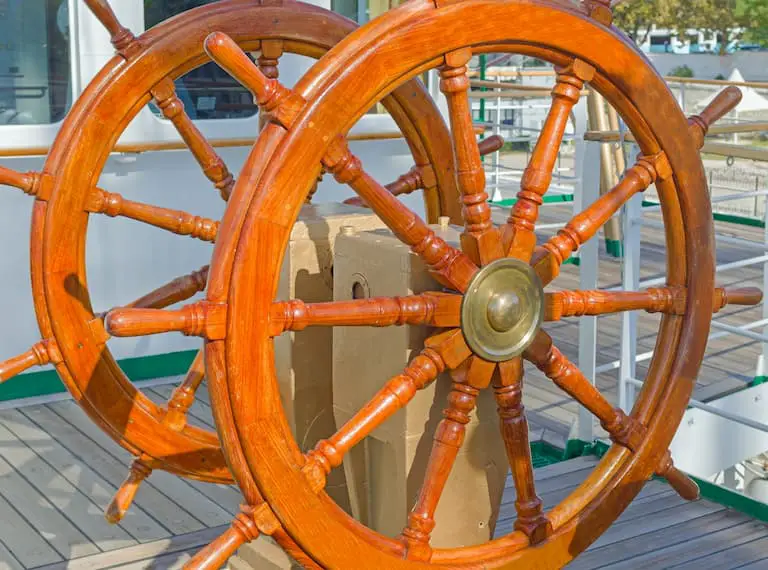
Why Some Sailboats Have Two Helms (Dual Helms Explained)
While most sailboats have a single helm with a steering wheel in the center, some larger sailboats or racing boats may have two helms. So, why do these sailboats have double helms? Are there any practical benefits of two helms on sailboats? Some larger sailboats have two helms as it helps with steering from different…
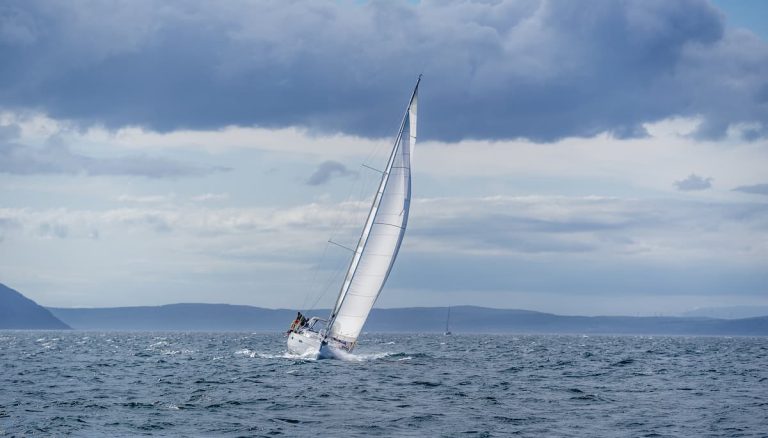
What To Do When a Sailboat Is Heeling Too Much (Explained)
Sailing is a fun activity for many people, but it comes with the innate prerequisite of being on the water rather than on stable ground. Aspiring captains must learn how to navigate and operate a boat while it rocks around in the water, which means dealing with things like heeling (i.e., leaning too far to…
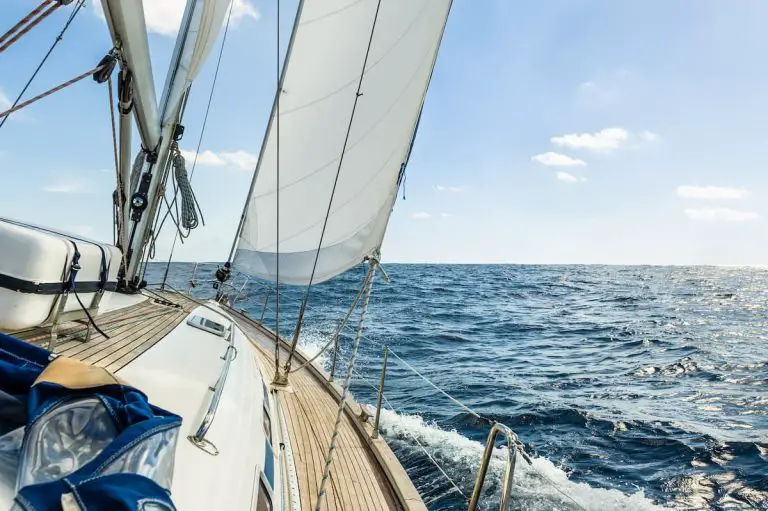
How Far Can a Sailboat Heel? (The Simple Answer)
Heeling is when a sailboat leans to one side, which can occur naturally or deliberately. When done deliberately, proper heeling enables a sailboat to travel faster. This, in turn, begs the question of how far a sailboat can heel? The optimal heeling range for sailboats varies by model and preference but usually sits between 10…
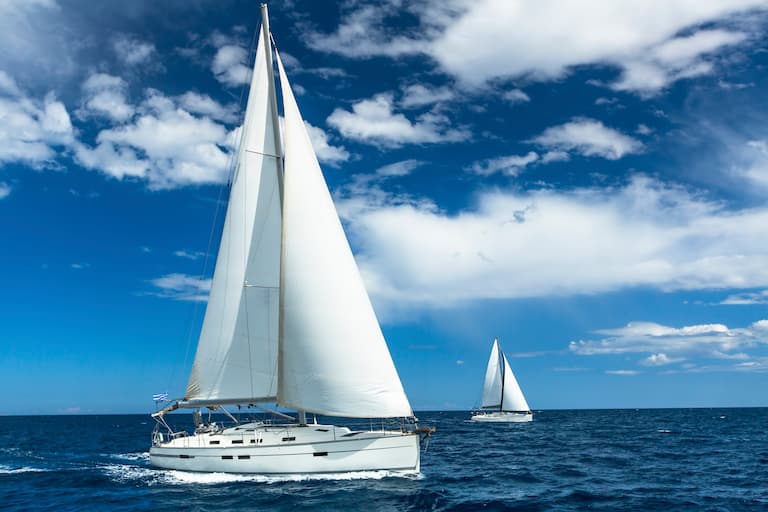
How Tight Should Sailboat Lifelines Be? (Need to Know!)
A lifeline is a safety device frequently found on sailboats and on construction sites. It’s composed of wire and stanchions, which are secured around the ship’s perimeter to prevent passengers from being thrown overboard or accidentally falling. But how tight should they be? Sailboat lifelines should be tight enough so they only stretch about two…
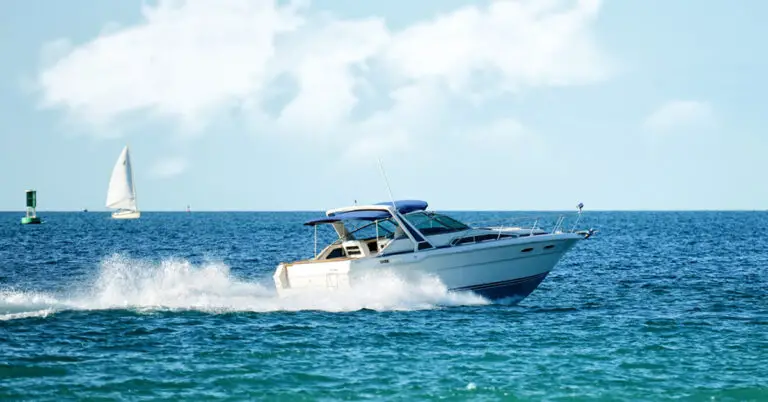
Sailboat vs. Powerboat: Which Is the Give-Way Vessel? Understanding Navigation Rules on the Water
Navigating the waters is an exciting adventure, whether you’re at the helm of a sleek sailboat or commanding a powerful motorboat. However, along with this thrilling journey comes the responsibility of understanding and adhering to the marine navigation rules, specifically those concerning the right of way or the “give-way” vessel. This aspect is vital to…

What’s a Boat with Two Masts Called: Two masted sailing boat types
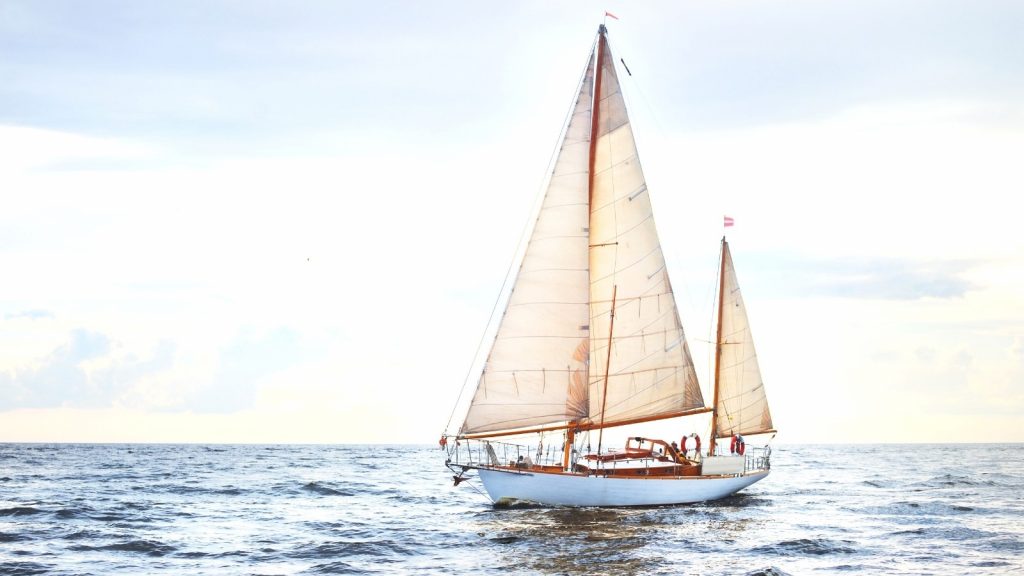
Two-masted sailing boats will always have a special place in the hearts of many sailors. Many sailors consider two-masted sailing boats to be the most attractive and graceful of all sailing vessels. They have an obvious elegance, but what do you know about these two masted sailboats? Let’s find out!
Among the most important aspects are the fact that two-masted sailing boats offer greater sail balance, engineless sailing and more heavy weather options.
Even if the two masted sailboats are not so common, the sailing world has a few of them and what is more, they represent a proof of the evolution and improvement of sailing boats over time. There are an almost endless number of ways sailors have arranged their sails on boats over the years.

Two-masted sailing boats are classified according to the size and position of their masts.
There are different two-masted sailing boat types and two of the most popular are schooners and yawls.
The origins of schooner-rigged vessels are unknown, however there is evidence of them in paintings by Dutch maritime painters dating back to the early 17th century.
Schooners were developed by Northern European countries, while yawls are believed to be descended from the fishing boats of England.
Sailboats with two masts include yawls, ketches, schooners and brigs (known as brigantines). Yawls and ketches are both types of sloops, which means they have one mast, but the difference between them is that the yawl has a second mast stepped at the bow.
Ketches and Yawls have a lower mast, unlike schooners that have a taller aft mast, which is also known as mizzen. Ketch sailing boats have something specific: the aft mast is located in front of the rudder post.
The yawl’s mizzenmast serves as a counterbalance for the jib sails, so that it doesn’t have to be hung from the forestay (the rope running from the top of the mast down to the deck). They’re usually smaller than ketches and have less rigging because they don’t carry as many sails as a sloop with two masts.
Yawls are faster sailboats than schooners because they’re lighter, more balanced and easier to sail upwind. They can also go faster because their shorter sails catch more wind. But schooners have larger payloads, which means more people or cargo — an important consideration for long trips without resupply.

Schooners are two-masted sailing boats, but instead of having a jib sail like yawls, ketches and most sloops, schooners have a fore-and-aft spanker sail like a gaff sailboat. These two-masted sailboats have at least two masts, the foremast being slightly shorter than the main mast.
Schooners are larger than yawls, ketches and other sloops and weren’t used very much in modern times because they were more difficult to handle. They’re still used in racing competitions today.
Schooners have a longer bow portion than yawls. The mainsail is aft of the mast, and either one or two foresails are in front of it. In a schooner, these are triangular sails; in a yawl, they’re trapezoidal. Yawls have bowsprits — poles that extend beyond the bow for the jib and stay sail to be attached. Schooners have small bowsprits that can support jibs but not large sails.

The term ketch derives from the word catch, which hints to how it got its name in the 17th century. Ketches were initially intended to meet the specific requirements of offshore net fishing.
Ketch is a type of sailboat that features two masts and two sails, commonly used as a racing and cruising boat. The mainmast of this two-masted sailboat is typically taller than the mizzen mast (aft-mast). Its name derives from catch.
Taller masts allow you to use larger sails, so ketch boats are able to achieve better speeds than similar boats with only one mast. Some ketch designs feature a gaff rig, which is similar to a yawl, while others feature a yawl rig, which looks like a traditional sloop.
Ketch boats may look easy to sail but the slightest mistake can lead to disaster. You must be careful when operating this type of boat because it does not have as much stability as other boats, especially when you’re manoeuvring in tight quarters or windy conditions.
A ketch may also be a small recreational boat with only one head-sail in use. Many modern designs have moved away from sail altogether and are powered by engine, while others use both sails as well as engines depending on circumstance.

The brigantine was once a tiny ship that carried both oars and sails. It was a favorite of Mediterranean pirates.
A brigantine is a square-rigged sailing boat with two masts, with a fully square-rigged foremast and two sails on the mainmast.
The mainmast is stepped forward of the deck, making it possible to sail into the wind using a triangular headsail known as a jib. The brig’s foremast is shorter than the mainmast.
The name of this type of boat with 2 masts is derived from the Italian word “brigantino”, which means brigand.
Also, this two-masted sailing boat type was most commonly used for coastal trade and pirate hunting. The brigantine had an advantage over other ships of the time because it could sail against the wind using both sails, making it easier to travel against strong winds.
Faster and easier to manoeuvre than a sloop or schooner, it was used for piracy and espionage.

FAQ: Two-Masted Sailboats
What do you call a two-masted sailboat.
Two-masted sailboats are of several types: yawls, schooners, ketches or brigantines.
Why do some sailboats have two masts?
The vast majority of sailboats feature a mainsail and a jib. These two-masted sailboats provide several advantages in terms of speed and maneuverability. These two masts may be configured in a variety of ways.
The foresail directs air beyond the back of the mainsail, generating greater power from the wind. In order to help menouvering, the foresail can be backed. So, adding sails makes things simpler for bigger boats, making them easier to handle in heavy winds.
What is the difference between a ketch and a yawl sailboat?
Because they are lighter, more balanced, and easier to sail upwind, yawls are faster sailboats than schooners. They can also go at a faster speed since their shorter sails collect more wind. Schooners, on the other hand, have higher cargoes, which means more people or freight – a crucial consideration for extended journeys without replenishing.
What is a one masted sailboat?
It's a sailing boat having a single mast roughly one-third the length's aft of the bow. A sailboat with a single mast usually has one headsail in front of the mast and one mainsail behind the mast.
What is a two-masted square rigger?
It's a brig with two square-rigged masts. A gaff-rigged fore-and-aft sail also called a "mizzen" is used in addition to jibs and staysails (stays'ls) before the foremast and staysails between the masts.
Leave a Comment Cancel Reply
Your email address will not be published. Required fields are marked *

The Different Types Of Sails And When To Use Them – Complete Guide

Sail forms an integral part of a sailboat. When you sail on the open water and observe other boats (in various sizes), you’d have noticed how each boat type has a specific model of sail. If you’re a beginner in boating, you must know that there are a ton of different sails and they each have their own purpose.
As a general setup, sailboats will use three common sails, including headsail, mainsail, and specialty sail. Due to the varying wind conditions and the model of the sailboat, there are many types of sails including jib, genoa, trysail, storm jib, code zero, gennaker, and spinnaker.
While that sounds like too many models of sails, you can easily differentiate between them and choose the ideal model based on your purpose. This article guides you on this aspect. Let’s begin!
Different Types of Sails & When To Use Them
1. mainsail.
Mainsail is by far the most widely spotted sail model, and it’s usually fixed to the boom and fitted behind the mast. This offers the highest mileage to your sailboat, thereby maximizing speed and performance.
You can use a mainsail if:
- You’re concerned about the performance
- You need to go faster and utilize all wind power
- You need to steer your boat irrespective of the wind’s status
- You’ve a large boat and can offer adequate space to this sail.
This mainsail displays a wide surface area to make the most out of the available wind condition. As a result, you can steer your boat quite easily. However, the downside is its size. It is very large and hard to store if you need to take it down for some reason.
Check out my other article all about maintaing sails!
2. Headsail
Similar to a mainsail, it’s very easy to spot a head sail. Just look at the bow of the boat and see if there is a sail. If you see one then yes that’s a headsail. Also called a jib or genoa, a headsail is smaller in size compared to a mainsail and attaches in front of the mast to the forestay. The Foresail will not have a boom for the clew of the sail to attach to. The clew will be attached to the foresails sheet. It can be used without the mainsail in certain conditions but for the most part the two sails are used together. The foresail is always forward of the main.
The headsail comes in many different forms such as a jib, genoa, spinnaker or storm jib. The most common headsail is a jib or genoa.
You can use a headsail if:
- Your sailboat is set up for it.
- You don’t want to use the mainsail at this time.
- Your mainsail is not usable.
The biggest advantage of a headsail is the option to protect yourself even if the wind turns unpredictable or wild. This all depends on the type of headsail you are using.
So, what are the different types of headsails? Let’s take a look!
As more boaters chose to use a headsail for their boats, the jib was introduced as one of its forms. The Jib is a form of headsail that is attached to a shackle present on the deck’s front region.
The Jib is a sail that does not go past the mast when it is raised and in use. If it goes past the mast then you probably have a genoa.
You can use a jib if:
- You are out for a normal day of sailing in moderate wind speeds
- You have a roller furling. Which is a sail that wraps up around itself.
Some weather conditions can make maneuvering harder or tighter than usual. As a result, it’s essential to use a jib in such cases. It functions well with boats containing a roller furling as the jib handles different positions and tackles the movement of the boat at ease.
2.2 Genoa
Just when you’ve got acquainted with the jib, genoa comes into the picture as a larger version of the jib. If you’re boating along a coastal region, the genoa sail is the one widely used and is attached to the front area of the deck as well.
Here’s a quick trick to find out if a boat has a genoa sail. This genoa is usually larger than a Jib. This means that the genoa effortlessly overlaps and extends itself beyond the mast, thereby covering the mainsail as well.
You should use a genoa sail if:
- You’re planning to sail in minimum wind conditions. Less wind means you need more sail.
- You find the wind to originate from the rear area.
- You own a large boat. Remember that genoa can partially or completely cover the mainsail too. Larger sails for larger boats!
While it’s great for sailing in regular conditions, there are downsides associated with it. A genoa can put you in a dangerous situation if you are sailing in high wind conditions and don’t have the ability to furl in the sail. Furling in the sail will reduce the area of the sail and catch less wind.
Genoas do come in many sizes as well such as 110% or 120%.
The next section of the sail list are ones that aren’t necessary but can be helpful in certain situations. Let’s look at specialty sails!
3. Specialty Sail
While headsails and mainsails are quite commonly used, there are also specialty sails in the market to address specific requirements. Some of the widely seen specialty sails are spinnakers, storm jibs, and code zeros.
3.1 Spinnakers
Spinnaker is a sail dedicated to downwind and is quite large. Think of a beautifully covered parachute.
It’s easy to spot spinnakers as they resemble kites or parachutes. However, it crosses the bow of the boat and isn’t attached to the forestay.
Unlike the genoa sail that covers the mast, a spinnaker fails to do so. The advantage of a spinnaker is the surface area. When the wind is light, the spinnaker can catch a lot more wind giving you more speed. The Spinnaker is usually fixed to three points – pole, halyard, and sheet.
You should use a spinnaker if:
- You have minimal wind on a run.
- You are trying to harness as much wind power as you can.
While it has a wide surface area, the downside is its inability to steer the boat during strong wind conditions. It can even put the passengers at risk when the wind is at high speeds.
Make sure you have experience before trying out the spinnaker.
3.2 Storm Jibs
Storm jib is another type of specialty sail meant exclusively for rough weather. It’s a tiny, triangular structure that helps during offshore racing or cruising. Just think of it as a smaller jib.
You should use a storm jib if:
- You’re going to sail in heavy weather conditions.
- You anticipate high wind speeds.
- You’re going to be in an offshore race and they are an approved sail type.
Note: In the case of an offshore racing requirement, it’s critical to take prior permission from the regulatory authority for using a storm jib.
3.3 Code Zeros
Code zero is another updated version of a spinnaker that’s meant to be a combination of genoa and gennaker sails. It resembles the look of a genoa but is a lot bigger.
You should use a code zero if:
- You’re looking for an overlapping flying headsail.
- You’re sailing only in light air conditions.
- You’re looking for an alternative to a Genoa.
Having said that, a code zero or a screecher does the job of a genoa with better efficiencies.
3.4 Trysail
Trysail is another type of specialty sail that’s tiny, triangular, and can be fixed right above a gooseneck on the sailboat.
The Trysail is less known in the market as most boaters go ahead with common mainsails and headsails. It’s essential to acknowledge trysail as a front-and-aft mainsail model. It offers excellent performance and contains a permanent pennant in it.
You should use a trysail if:
- You’re sailing in heavy weather conditions.
- You’re looking for a storm replacement.
- You are experienced with using them.
The quadrilateral sail in a trysail is usually turned and bent to a mast, and this helps in heading the vessel during windy conditions.

3.5 Gennakers
If you’ve been able to spot genoa and spinnaker in the past, identifying a gennaker is incredibly easy. A gennaker is a hybrid sail form that is small, slow, and requires no pole attached to the mast.
You should use a gennaker if:
- You’re looking for a smaller version of a spinnaker.
- You’ve no space to fix a pole to the mast.
- You require the sail to be easily manageable.
- You’re sailing in a region requiring minimum downwind levels.
Choosing a hybrid sail has a lot of benefits as it combines the usefulness of 2 sail models. However, being aware of their cons is critical to planning a safe sail.
As you begin using these sails, you can also look for better customizations. There are drifters, wind seekers, and other jib types that are meant to handle different wind conditions.
How Many Sails On A Sailboat ?
In general, a sailboat contains two sails. Two sails is the typical setup for the best performance of the boat during different wind conditions. It’s essential to pick your two sails based on your sailing plan.
Why Are There Two Sails On A Sailboat?
A sailboat uses two sails because the wind left over by the first sail is easily caught by the second sail. This helps in steering the sailboat to a better extent and gives the sailboat more power.
Final Thoughts
Sails are one of the major assets of a sailboat. From managing wind to maximizing the performance and longevity of a sailboat, the type of sails you use, plays a huge role. From the various sail types listed in this article, you can choose the best model that fits your sailing routine. Just make sure to remember to check and make sure they are the correct size for your vessel.
Make sure to plan ahead and have the right sails for your sailing weekend. Cheers!
Boatlifehq owner and author/editor of this article.
Recent Posts
Sailboat Racing - Rules & Regulations Explained
Sailboat racing, a blend of skill, strategy, and adherence to intricate rules and regulations, offers a thrilling and intellectually stimulating experience on the water. Navigating through the...
What is the best sailboat to live on? Complete Guide
Embarking on the journey of living aboard a sailboat requires careful consideration of your budget, desired amenities, and storage options. This guide offers a concise, step-by-step approach to...
🚚 FREE US SHIPPING ON ORDERS OVER $25 🚚

Why Do Sailboats Have Two Sails?

There are many different boats on the market, but one thing that they all have in common is the fact that there are at least two sails attached. Have you ever asked yourself why that is, and how these sails work? Today, we are going to provide some easy to understand answers to some very complex questions dealing with physics!
The vast majority of sailboats feature a mainsail and a jib. These two sailboat sails provide endless benefits when it comes to speed an maneuverability of a sailboat. There are plenty of different configurations for these two sails however, and we will get into some different boat styles a bit later on in the article.
Whichever sail and rigging setup you decide to go for, ensure that you can stow and unfurl them with ease with the assistance of some amazing boat zipper and snap lube ! Once those sails are safely stowed, you can easily dock your boat with a durable standard boat hook end . It's also great for snagging lines quickly and easily.

How Sails Work
Before we get into the nitty gritty, we need to give a brief overview of how sailboat sails actually function . An inexperienced sailor might think that the wind simply blows into the sail and this pushes the vessel forward, and they'd be half right. That's exactly how a sail works, but only when you are directly downwind.
The vast majority of the time your sailboat's sails won't be directly lined up with the direction of the wind. When properly trimmed the luff or leading edge of the sail will be lined up pointing into the wind. This creates higher pressure on the windward side and lower pressure on the leeward side.
Naturally, the boat will move toward the side with the lower pressure. This is possible because the sail isn't just a flat piece of cloth. You might think of it as your sails as being somewhat similar to the construction of an airplane wing, albeit an airplane wing that is standing up on its side.
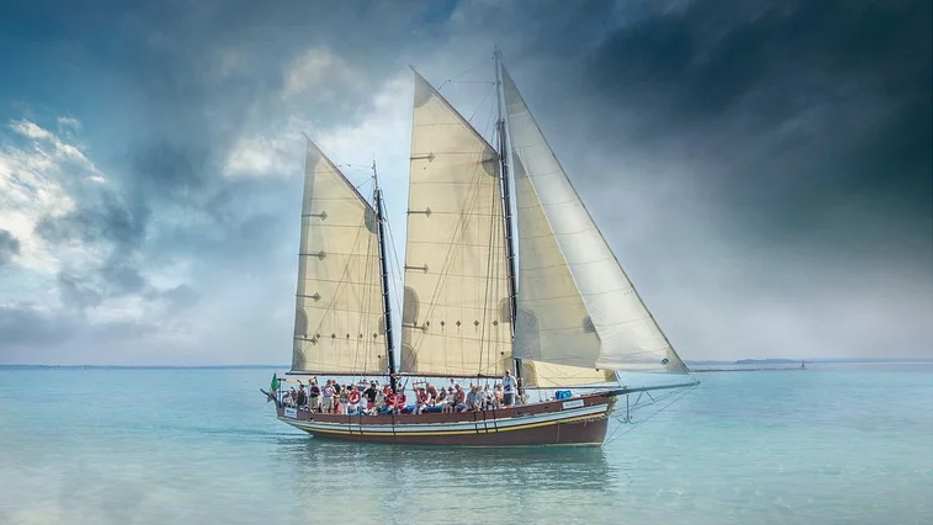
Gotta Go Fast!
When it comes to getting around, what could possibly be better than one sail? Well, why not two sails? The wind that sweeps around the first sail can be easily caught by the second and add to the overall speed of your sailboat. To easily demonstrate this, take down that extra sail if possible.
Obviously this will catch less wind, but it might not seem as apparent until you feel the effects for yourself. You'll certainly notice a significant decrease in speed, and very likely some decreased agility as well. The interesting thing is that adding a third sail has diminishing returns, and will only affect speed very slightly.
Maximum Maneuverability
With two sheets up a boat can easily drift due to the forces being exerted on it. Things like the keel and rudder will compensate for the sideways drag and keep your sailboat on a steady heading. The added forward force can also be used to increase a boat's ability to maneuver. A slight shift in the jib can result in a fairly sharp turn.
This is another of the myriad uses of a sailboat's second sail. When you're on the open ocean the ability to change direction quickly can be imperative to the safety of you and your crew. The closer you get to harbor, the more important it can be to operate your vessel with more precision.
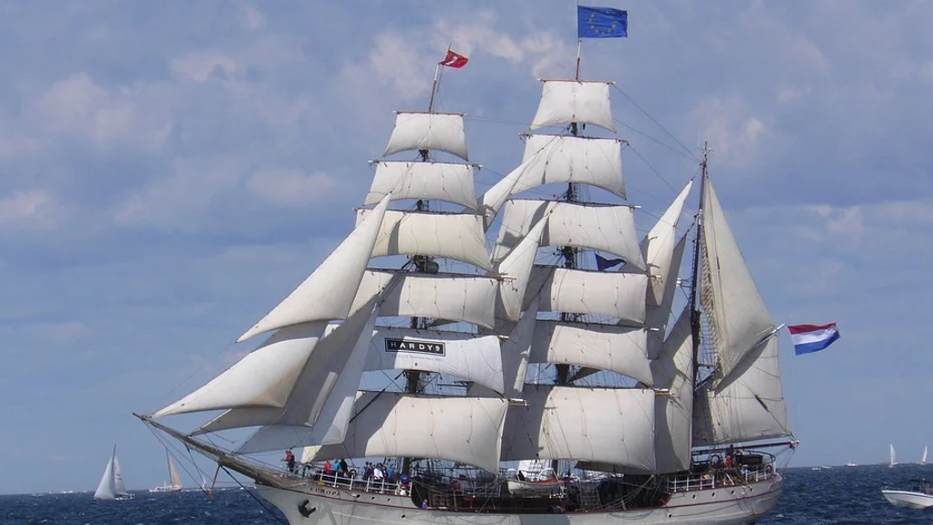
Sailboat Types
The sail and mast configuration of a sailboat can differ fairly widely and this had led to many different names and types of boat. The many uses of mast configuration sailboats can vary widely, and we will break down a few of these sailboats, how they work, and what makes each of them special and just how they differ. This is just a small sampling, and we will very likely revisit different sailboat types in another blog for more in-depth analysis.
A sloop is by far the most common kind of sailboat you will generally see. The sloop has one mast and two sails, a mainsail and a headsail. The headsail might be referred to as a jib, spinnaker, or genoa depending on the actual size and shape. The headsail is hoisted to the top of the mast on a supporting cable known as a forestay.
A cutter has a single mast and mainsail, but the mast is further aft in order to allow space for two headsails from two separate forestays. The headstay holds the jib, and the innter stay carries the staysail. The cutter is a favorite rig for cruising sailboats since it has an easily managed range of sail combinations that can easily be changed and customized to compensate for different wind strengths.
The ketch has a second, smaller mast that sits behind the mainmast. This smaller mast is called a mizzenmast.
The schooner's aft mast is taller than its forward mast. Technically schooners can have anywhere from two to six masts, but the vast majority only have two.
Similar to a ketch, the yawl features a mizzenmast. The difference being that the mizzen on a yawl sits behind the rudder post and is therefore smaller than it would be on a ketch.
Catboats feature one mast and one sail. The mast sits very far forward, and this is a popular rig configuration on small boats.

- choosing a selection results in a full page refresh
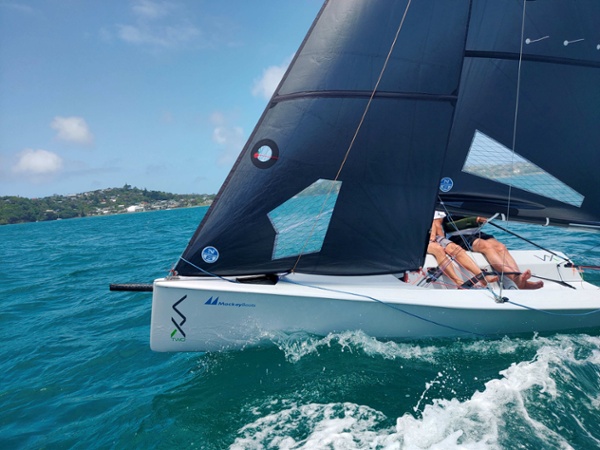
VX TWO
High-performance dinghy sailing with ease.
The new VX Two is a game changer in the two-person hiking skiff market, achieving new speed levels at such ease, no matter what point of sailing.
Equipped with a fully battened square-top main, asymmetric spinnaker, easy-to-use controls, and simple systems, this sailing dinghy is beautifully balanced to provide a near-perfect handling experience. Launching and retrieving is made so easy with a well-balanced, light beach trolley.
Our promise: It's the boat you are just as likely to take for a blast as you are for a race.
Check out its Features in the tab below
Take a look at the action >>
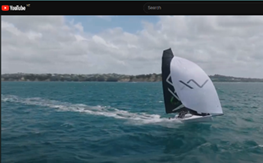
Download the brochure >>
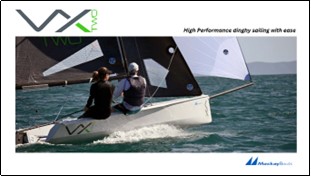
VX Two Specifications
Designers Rodger Martin and Ross Weene
Hull Length 4.78m
Beam (width) 1.74m
Spars Carbon fibre tubes assembled by Mackay Boats
Mainsail 8.7sqm, 93.6 sq ft'
Jib 3.9sqm, 42 sq ft
Gennaker 14.9sqm or 160 sq ft
Crew 2
Foils Centre board and kick-up rudder
Trolley Yes
Ideal weight 125-155kg
Boat Weight 71.1kg (includes all ropes and prod, excl mainsheet).
All up weight - 93.24kgs (includes centreboard, rudder stock, tiller, tiller extension, all sails, boom, mainsheet, mast, halyards, stays).
The VX Two in detail -
The hull is in keeping with the distinctive sleek VX hull shape. A wide, shallow, open cockpit enables easy manoeuvrability for the skipper and crew while adding valuable righting moment for the hiking crew
The foils use a centreboard and kick-up rudder system, which makes for easy launching and retrieving.
The sail wardrobe includes a square top, fully battened mainsail, full batten jib and an Asymmetric spinnaker. The sails are open to be made by any sailmaker but built to strict class rules.
The spars are clear coated carbon tubes assembled by Mackay Boats.
Controls and Systems
• The mainsheet system comes directly off the boom just like skiff sailing which clears the cock pit and enables easy trimming.
• Adjustable jib leads will keep the crew busy making the jib perfect through the wind range.
• Easy to use halyard systems, including the use of jib luff zip makes for fast rig up
• A large spinnaker chute along with a carbon fibre retractable bowsprit has been designed for easy hoists and drops of the Asymmetric spinnaker.
• Controls are positioned in a central position for easy access and quick adjustments by crew and helm.
• Any excess water is shipped through the open transom.
• The boat sits on a beach aluminium trolley which allows for easy transportation along with launching and retrieving.
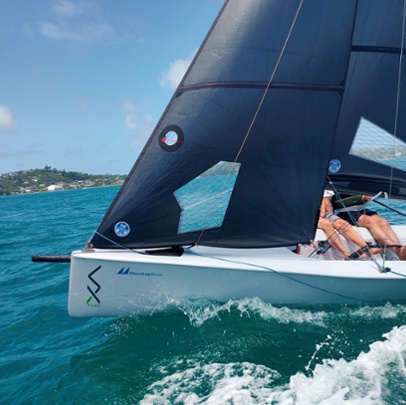
Introducing the VX Two - Next Level Hiking Skiff Fun. Check out the footage

Congratulations to the 2023 49er/49erFX European Championship winners
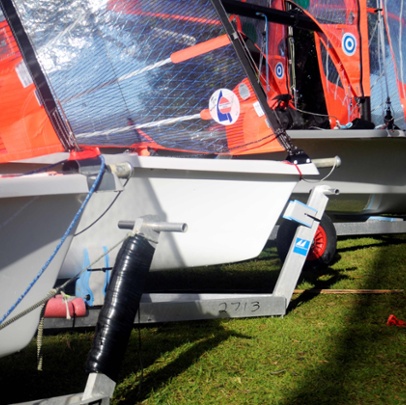
29er History
What is included as an accessory.
Trolley (Aluminum), top cover, Bottom cover, Rig Tension Gauge – Loos & Co PT-1M, Boatbreaker.
What is included in the full package?
The boat comes complete with all ropes and sheets from Robline, foils, rudderstock, tiller extension, pole, hiking straps, boom, and Bluewave turnbuckles. The rig package comes with complete mast, stays, halyards and boom. Sails are not included.
Sorry, we can't find and posts.
Are you sure you want to change currency?
Brown University Athletics
Brown University

Graham Hall Team Race Interconference
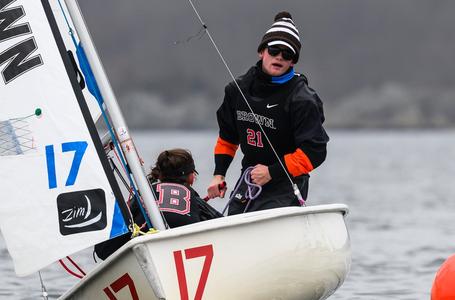
Coed and Women's Sailing Finish in Top Three
3/18/2024 12:44:00 PM | Women's Sailing, Coed Sailing
BROWN UNIVERSITY SPORTS FOUNDATION The Brown University Sports Foundation (BUSF) is the lifeblood of the athletics program and exists to enhance the student-athlete experience through philanthropic support from alumni, parents, fans, and friends. A gift through the Sports Foundation makes an immediate impact on today's Brown Bears and helps them to be their best in the classroom, in competition and most importantly in the community. To learn more about supporting the Bears, please click here . FOLLOW US ON SOCIAL For the latest on Brown Athletics, please follow @BrownU_Bears on Twitter, @BrownU_Bears on Instagram, like BrownUBears on Facebook, and subscribe to the BrownAthletics YouTube channel.

- Share full article
Advertisement
Supported by
Grenada Prison Escapees Are Charged With Murder of American Couple
The couple, Ralph Hendry and Kathy Brandel, went missing while sailing off the coast of Grenada.

By Aimee Ortiz
Three men who had escaped from a prison in Grenada and were accused of hijacking an American couple’s yacht to flee have been charged with their murder, the police said on Thursday.
The couple, Ralph Hendry, 66, and Kathy Brandel, 71, went missing while sailing off the coast of Grenada . They had been spending the winter cruising in the Caribbean in their catamaran called Simplicity, which was found abandoned in neighboring St. Vincent and the Grenadines on Feb. 21.
There was no indication in the latest police statement that the bodies of the couple had been recovered as of Thursday.
Trevon Robertson, 23; Atiba Stanisclaus, 25; and Ron Mitchell, 30, face two counts of “capital murder by intentionally causing the death of Ralph Hendry and Kathleen Brandel,” the Royal Grenada Police Force said.
The authorities from police forces in Grenada and St. Vincent and the Grenadines have given different ages and name spellings for the escapees.
The men were also charged with escaping lawful custody, housebreaking, robbery and two counts of kidnapping; Mr. Stanisclaus is also facing a rape charge, the police said, but no details were offered on those accusations. The three men made their first court appearance on Thursday, and are due back on March 27. The Royal Grenada Police Force did not immediately respond to a request for comment.
The police had said in a statement released on Feb. 22 that three men who escaped from a prison in Grenada on Feb. 18 and made their way to St. Vincent using a yacht that had been docked in the St. George area of Grenada.
The prisoners were recaptured on Feb. 21, the same day that the couple’s yacht was found. At the time, the police said they were “currently working on leads that suggest that the two occupants of the yacht may have been killed in the process.”
At a news conference on Feb. 26 , Commissioner Don McKenzie of the Royal Grenada Police Force that “information suggests that, while traveling between Grenada and St. Vincent, they disposed of the occupants.”
During a Feb. 26 news conference , Junior Simmons, superintendent of the Royal St. Vincent and the Grenadines Police Force, said the joint investigation into the disappearance with Grenada police was ongoing, and he said the couple was presumed dead.
The investigation revealed that while sailing from Grenada, “the suspects committed several criminal acts including bodily harm to the couple,” he said.
The couple, who were married for 27 years, were “veteran cruisers,” according to the Salty Dawg Sailing Association , a nonprofit that brings together a community of sailors engaged in long-distance cruising on their boats. The couple were longtime members, the organization said in a statement, and “they both contributed to building the S.D.S.A.”
In a joint family statement posted on the association’s website on Feb. 27, Nick Buro, the son of Ms. Brandel, and Bryan Hendry, the son of Mr. Hendry, said that “if we have learned anything from this tragic event, it’s that we know they left this world in a better place than it was before they were born.”
“Ralph and Kathy lived a life that most of us can only dream of,” the message said. “Sailing the eastern coast of the United States, living on their home Simplicity, making friends with everyone they encountered, singing, dancing and laughing with friends and family — that’s who Ralph and Kathy were and that’s how they will be remembered in our hearts.”
Aimee Ortiz is a reporter on the Investigations desk. She was previously a general assignment reporter on the Express Desk. More about Aimee Ortiz
Boston College Athletics

Sailing March 17, 2024 Athletic Communications
Eagle Earn Two Victories in Third Weekend of Season
Boston college sailing collects victories at geiger trophy and women's southern new england team race, players mentioned.

Grace Beneke

Nick Budington

Michael Kirkman

Katelyn McGauley

Colleen O'Brien

Michaela O'Brien

Sara Schumann

Peter Busch

Sophia Hacket

Peter Joslin

Thanks for visiting !
The use of software that blocks ads hinders our ability to serve you the content you came here to enjoy.
We ask that you consider turning off your ad blocker so we can deliver you the best experience possible while you are here.
Thank you for your support!
2024: Team Wicked Wily Wildcat and Team Guardian Sailing Race to Alaska
Two teams, both alike in reckless grace, On vast seas where we our race cast, Guardian Sailing and Wicked Wily Wildcat, fast, Through trials where bold choices embrace. If you want actual information and not nonsense words, hit play.
- More Episodes
- All rights reserved
Top Podcasts In Sports

IMAGES
VIDEO
COMMENTS
Having two sails (a mainsail and a jib) helps sailboats by allowing the sailor to better maneuver the sailboat through the water, easily increase the boat's speed, and have better handling over the boat overall. In short, having two sails offers improved control over the boat. With all these benefits, sailors can handle their boats with ease.
The 5 most common two-masted rigs are: Lugger - two masts (mizzen), with lugsail (cross between gaff rig and lateen rig) on both masts. Yawl - two masts (mizzen), fore-and-aft rigged on both masts. Main mast much taller than mizzen. Mizzen without mainsail. Ketch - two masts (mizzen), fore-and-aft rigged on both masts.
Sailboats are powered by sails using the force of the wind. They are also referred to as sailing dinghies, boats, and yachts, depending on their size. Sailboats range in size, from lightweight dinghies like the Optimist dinghy (7'9") all the way up to mega yachts over 200 feet long. The length is often abbreviated as LOA (length overall), which ...
Ketch is a type of sailboat that features two masts and two sails, commonly used as a racing and cruising boat. The mainmast of this two-masted sailboat is typically taller than the mizzen mast (aft-mast). Its name derives from catch. Taller masts allow you to use larger sails, so ketch boats are able to achieve better speeds than similar boats ...
one mast. triangular mainsail (called a Bermuda sail) a foresail (also called the jib) fore-and-aft rigged. medium-sized (12 - 50 ft) Fore-and-aft rigged just means "from front to back". This type of rigging helps to sail upwind. Any sailboat with one mast and two sails could still be a sloop.
Why Are There Two Sails On A Sailboat? A sailboat uses two sails because the wind left over by the first sail is easily caught by the second sail. This helps in steering the sailboat to a better extent and gives the sailboat more power. Final Thoughts. Sails are one of the major assets of a sailboat. From managing wind to maximizing the ...
Catamaran Sailboats. The second most common sailboat configuration is the catamaran. A catamaran is a multihull sailboat that has two symmetrical hulls placed side-by-side and connected with a deck. This basic design has been used for hundreds of years, and it experienced a big resurgence in the fiberglass boat era.
Gaff ketch - two-masted (mizzen), two mainsails, staysails, fore-and-aft rigged. Full-rigged ship or tall ship - three or more masts, mainsail on each mast, staysails, square-rigged. The first word is the shape and rigging of the mainsail. So this is the way the sail is attached to the mast. I'll go into this later on.
A sailboat with two parallel hulls is known as a catamaran. The hulls are connected by a deck, which provides a wide and stable platform, allowing them to sail faster and more efficiently than monohulls. Some of the most common catamaran types include cruising catamarans, racing catamarans, and power catamarans.
The vast majority of the time your sailboat's sails won't be directly lined up with the direction of the wind. When properly trimmed the luff or leading edge of the sail will be lined up pointing into the wind. This creates higher pressure on the windward side and lower pressure on the leeward side. Naturally, the boat will move toward the side ...
4. 1977 Puma 38 Ketch. The Puma 38 Ketch is a two-masted sailboat built for racing like the rest of the Puma sailing line. This brand prides itself on speed and maneuverability. The 1977 Puma 38 is 34 feet in length with a backup diesel engine that can help you get where you need to go as well as docking into a slip.
Multi-Hull sailing vessels pricing. Multi-Hull sailing vessels for sale on YachtWorld are available for a range of prices from $34,900 on the relatively moderate end all the way up to $4,941,987 for the more lavish boat models.
Yawl. A yawl is one of the most common types of two-mast sailboats. It has two masts: a mizzenmast and the mainmast. The mizzenmast is usually much shorter than the mainmast. This makes it an oblique type of a sailboat in the sense that the mainmast is located in the front of the boat while the mizzenmast is located in the rear past or the boat.
Five Ocean-Going Sailboats With Two Masts. Some of the most reputable boat builders in the world favor ketch and yawl rigs. Some popular sailboats with two masts used nowadays include the Nicholson 38, the Bayfield 40, the Amel Super Maramu, the Hinckley Bermuda 40, and the Bowman 46. Let's look at each model.
The RS200, Hunter 15, and Hobie 16 are a few of the best 2-person sailboats. Other sailboats meant for two people include the Norseboat 17.5, Sunfish, and even a Laser SB3. These small sailboats are best geared as a beginner sailboat that compliments having two people on board. In my experience, there are plenty of small sailboat brands that ...
The following is a partial list of sailboat types and sailing classes, including keelboats, dinghies and multihull (catamarans and trimarans). Olympic classes Laser. Name Year of first construction ... Contender RS Feva Two Tasars. Name Number built Year of first construction Designer Builder Notes Albacore: 1950: Uffa Fox: Several: 420: 56,000 ...
Catalina 315. nwyachting. This is a nifty pocket cruiser that raises the quality bar for solo sailors with extreme comfort and performance. With just a 9.45 meter hull, the Catalina 315 has more internal room than most classics and remains superb for solo sailing.
SAILING WITH TWO SAILS Introduciton This tutorial introduces the forward sail on a boat with two sails. The sail, called a jib, provides many benefits, but also adds a level of complexity to sailing. The jib is the sail at the front of the boat. It provides a number of benefits, but unfortunately, it can be somewhat complicated when first ...
A sailboat refers to any class and subclass of boat that is designed with one or more masts and rigging system as the main source of propulsion. Sailboats are available in a variety of models and rigs, including racing boats, sloops, schooners, catamarans, trimarans, sailing cruisers, and others. Some of the first sailboats on record date back ...
Traditionally sailboats are monohull displacement hulls, but catamarans and multi-hulls are becoming more common. There are many kinds of sailboats and they carry different rigs (masts, supporting shrouds and stay, and sail combinations). Sloops have one mast and generally two sails - a mainsail and a headsail called a jib or genoa.
Catalina 16.5. jlodrummer. Catalina Yachts are synonymous with bigger boats but they have some great and smaller boats too such as Catalina 16.5. This is one of the best small sailboats that are ideal for family outings given that it has a big and roomy cockpit, as well as a large storage locker.
The new VX Two is a game changer in the two-person hiking skiff market, achieving new speed levels at such ease, no matter what point of sailing. Equipped with a fully battened square-top main, asymmetric spinnaker, easy-to-use controls, and simple systems, this sailing dinghy is beautifully balanced to provide a near-perfect handling ...
The galley of Catalina 30 has large counter space and two private double cabins, one forward (V-berth) and one aft. The forward cabin is a V-berth formation. Also, the sofa converts and forms two more berths on the starboard side. It is possible to find a good and properly maintained Catalina 30 with the price of $15,000.
PROVIDENCE, R.I.-The Brown University sailing teams competed in a total of four regattas this weekend, finishing top three at two of them. The women's sailing team came in second place out of five teams at the Women's Southern New England Team Race at Connecticut College.
The couple, who were married for 27 years, were "veteran cruisers," according to the Salty Dawg Sailing Association, a nonprofit that brings together a community of sailors engaged in long ...
Two more races were completed, this time in a 15-20 knot easterly with flatter water and slightly longer courses. On Day 1, Race Officer Ross Wilson set a 1.6nm course, while today, he opted for 1.7. After a general recall and then a start under a black flag, two boats were forced to wait on the sideline.
Ken's mission to make a difference began over seven years ago when he boarded his four-metre long RS Aero dinghy called Yoda, to sail 865 miles from Lands End to John O'Groats with the aim of ...
BOSTON, Mass. - The Boston College Sailing team earned two wins at the Geiger Team Race and the Women's Southern New England Team Race on the weekend of Mar. 16-17, while also at the Southern New England Team Race. Geiger Team Race Boston College earned first place at the Geiger Team Race with a 14-3 record over the course of the two-day regatta.
Two teams, both alike in reckless grace, On vast seas where we our race cast, Guardian Sailing and Wicked Wily Wildcat, fast, Through trials where bold choices embrace. If you want actual information and not nonsense words, hit play. Show Race to Alaska, Ep 2024: Team Wicked Wily Wildcat and Team Guardian Sailing - Mar 13, 2024.